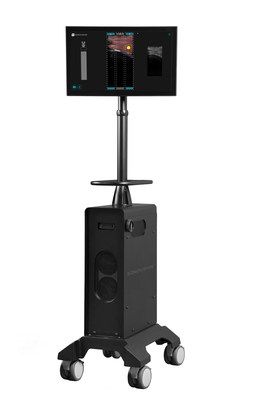FDA Clears Machine Learning-Enabled Ultrasound for Spine Surgery
510(k) clearance given to product for use in real-time surgery.

Ultrasound can now be used real-time during spinal surgery. The Food & Drug Administration announced Tuesday it has awarded 510(k) clearance to TDi™ for its SonoVision™ ultrasound platform.
According to a company statement, SonoVision™ is the first machine learning-enabled ultrasound platform designed for intraoperative access to the spine.
“With this clearance, TDi™ ushers in a new era of innovations related to soft tissue imaging in spine surgery and the beginning of a much broader trend of artificial intelligence and machine learning being applied to satisfy challenging clinical requirements of spine surgery,” said Alex Kulianov, TDi™ chairman and chief executive officer.
SonoVision™ uses image-processing algorithms to differentiate between nerve, muscle, bone, and vessels during real-time. With FDA clearance, Kulianov said, it can be used as an imaging modality for spine surgery. Work is currently being done to develop expanded procedural applications, such as posterior access to the spine, 3D imaging, and image-guided navigation integration.
According to TDi™ officials, SonoVision™ will accelerate commercialization efforts in 2020.
New AI-Enabled Portable Ultrasound May Facilitate 50 Percent Reduction in Cardiac Imaging Scan Time
March 28th 2025Artificial intelligence (AI)-powered measurement capabilities provide key features with the Compact Ultrasound 5500CV device, which was unveiled at the American College of Cardiology (ACC) conference.
The Reading Room: Racial and Ethnic Minorities, Cancer Screenings, and COVID-19
November 3rd 2020In this podcast episode, Dr. Shalom Kalnicki, from Montefiore and Albert Einstein College of Medicine, discusses the disparities minority patients face with cancer screenings and what can be done to increase access during the pandemic.
Can Ultrasound-Based Radiomics Enhance Differentiation of HER2 Breast Cancer?
March 11th 2025Multicenter research revealed that a combined model of clinical factors and ultrasound-based radiomics exhibited greater than a 23 percent higher per patient-level accuracy rate for identifying HER2 breast cancer than a clinical model.